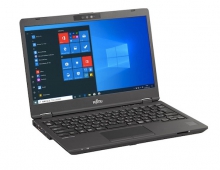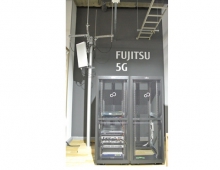
Fujitsu Develops Palm Vein Authentication Sensor For Tablets
Fujitsu has developed a small palm vein
authentication sensor that can be employed in tablet
devices.
The new sensor is just 5mm thick and uses new image sensors and other optical components. The new sensor preserves the same authentication performance as Fujitsu's existing technology while halving thickness of current models.

Fujitsu's biometric authentication technology is based on the vein patterns in a user's palm. This approach has a number of advantages that are unique even among biometric authentication technologies, including high authentication accuracy and the measurement of data from inside of the body, which makes it difficult to falsify.
The technology has been commercialized by Fujitsu as a non-contact palm vein authentication system called PalmSecure, which is used, for instance, by banks to authenticate their customers, for computer log-in, and in room-entry/exit management systems.
The new sensor is just 5mm thick and uses new image sensors and other optical components. The new sensor preserves the same authentication performance as Fujitsu's existing technology while halving thickness of current models.

Fujitsu's biometric authentication technology is based on the vein patterns in a user's palm. This approach has a number of advantages that are unique even among biometric authentication technologies, including high authentication accuracy and the measurement of data from inside of the body, which makes it difficult to falsify.
The technology has been commercialized by Fujitsu as a non-contact palm vein authentication system called PalmSecure, which is used, for instance, by banks to authenticate their customers, for computer log-in, and in room-entry/exit management systems.





















